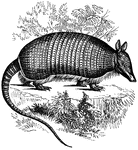Clipart tagged: ‘Armadillo’

Aardvark
"It is about three and a half feet long, the tail one foot nine inches. It has a long callous snout…
Armadillo
The armadillos have scaly skin for protection; some have also the power of rolling themselves into a…

Armadillo
The limbs are short and strong, as are also the claws , and the animals have a great aptitude for digging…

Armadillo - Endoskeleton and Exoskeleton or Dermoskeleton
An illustration of a pichiciago, a small burrowing armadillo. The front half of the animal is covered…

Six-banded armadillo
Armadillos live on carrion, insects and fruit. They are all small, except for the Gigantic armadillo…
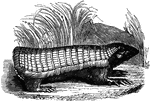
Chlamphorus
"The animal of this genus are the smallest of the armadillos, and their covering is more simple in its…
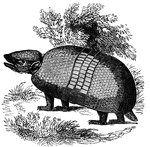
Mataco
"Tolypeutes. It is about fifteen inches long, and having the faculty of rolling itself into a ball,…
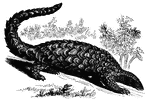
Indian Pangolin
"Its head is small, pointed, and conic; muzzle elongated and narrow; body rather stout; tail short and…
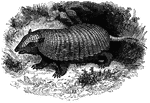
Giant Tatou
"In this carapace covers the body above and low down on the sides, but leaves the belly unprotected;…

